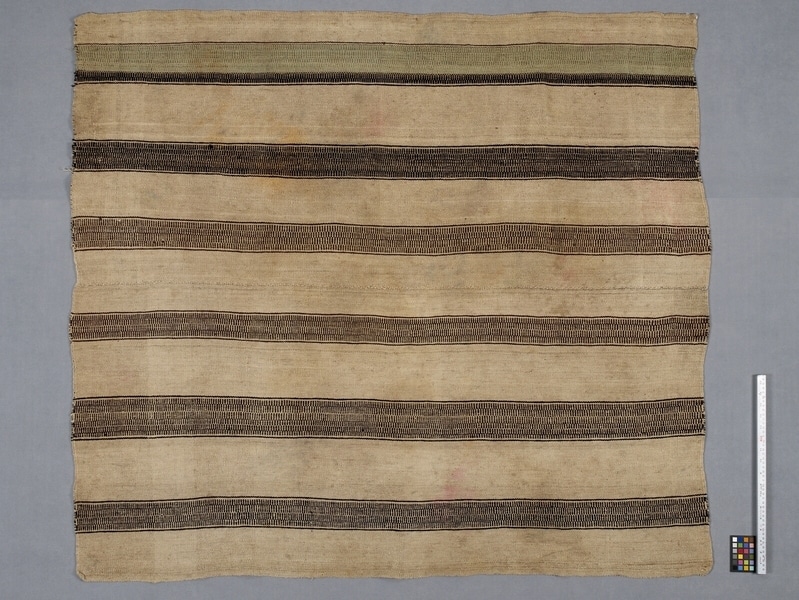Blanket Item Number: Sf990 from the MOA: University of British Columbia


Description
Blanket of heavy off-white cloth with six vertical bands composed of alternating black and off-white or brown and off-white striped bands with a portion of one band in alternating bands of off-white and light green. The blanket is composed of a central vertical seam joining two rectangular pieces.
History Of Use
Warp-faced fabrics with three or four selvedges are woven by women on the indigenous style loom, a staked-out horizontal ground loom, or an adjustable tension (body) loom. The technique and structure have pre-Conquest antecedents, and as in ancient times, the fabrics are used in their rectangular form without cutting or shaping. Hand-woven blankets like this one are used for covers on beds, tables and the ground. They are also pinned together into sleeping bags and used by men when they sleep overnight on the boat in Puno. Taquile people began to use factory-made blankets in the late 1970's, but most families still have some handwoven ones.
Narrative
Sold by Gonzalo Yucra Huatta, but made by his mother, Josepha Huatta Yucra. Used by the family as a cover for 5 years.
Specific Techniques
Plain colour areas or stripes are warp-faced plain weave. Sheep's wool yarn spun z and plied 2-s; warp-faced plain weave with pick and pick stripes. Two 4 selvedge loom pieces are assembled by flat figure 8 stitching.
Cultural Context
domestic
Item History
- Made by Josepha Huatta Yucra (Maker) in Taquile, Puno, Peru during 1979
- Collected by Elizabeth L. Johnson during 1984
- Owned by Elizabeth L. Johnson before June 13, 1984
- Received from Elizabeth L. Johnson (Seller) and Museum of Anthropology Shop Volunteers (Funding source) on June 13, 1984
What
- Name
- Blanket
- Identification Number
- Sf990
- Type of Item
- blanket
- Material
- wool fibre, dye and cotton fibre
- Manufacturing Technique
- woven, plied, sewn, dyed and spun
- Overall
- height 129.5 cm, width 147.5 cm
Who
- Culture
- Quechua
- Creator
- Josepha Huatta Yucra (Maker)
- Field Collector
- Elizabeth L. Johnson
- Previous Owner
- Elizabeth L. Johnson
- Received from
- Elizabeth L. Johnson (Seller) and Museum of Anthropology Shop Volunteers (Funding source)
Where
- Holding Institution
- MOA: University of British Columbia
- Made in
- Taquile, Puno, Peru
When
- Creation Date
- during 1979
- Collection Date
- during 1984
- Ownership Date
- before June 13, 1984
- Acquisition Date
- on June 13, 1984
Other
- Item Classes
- textiles
- Condition
- fair
- Accession Number
- 0992/0026